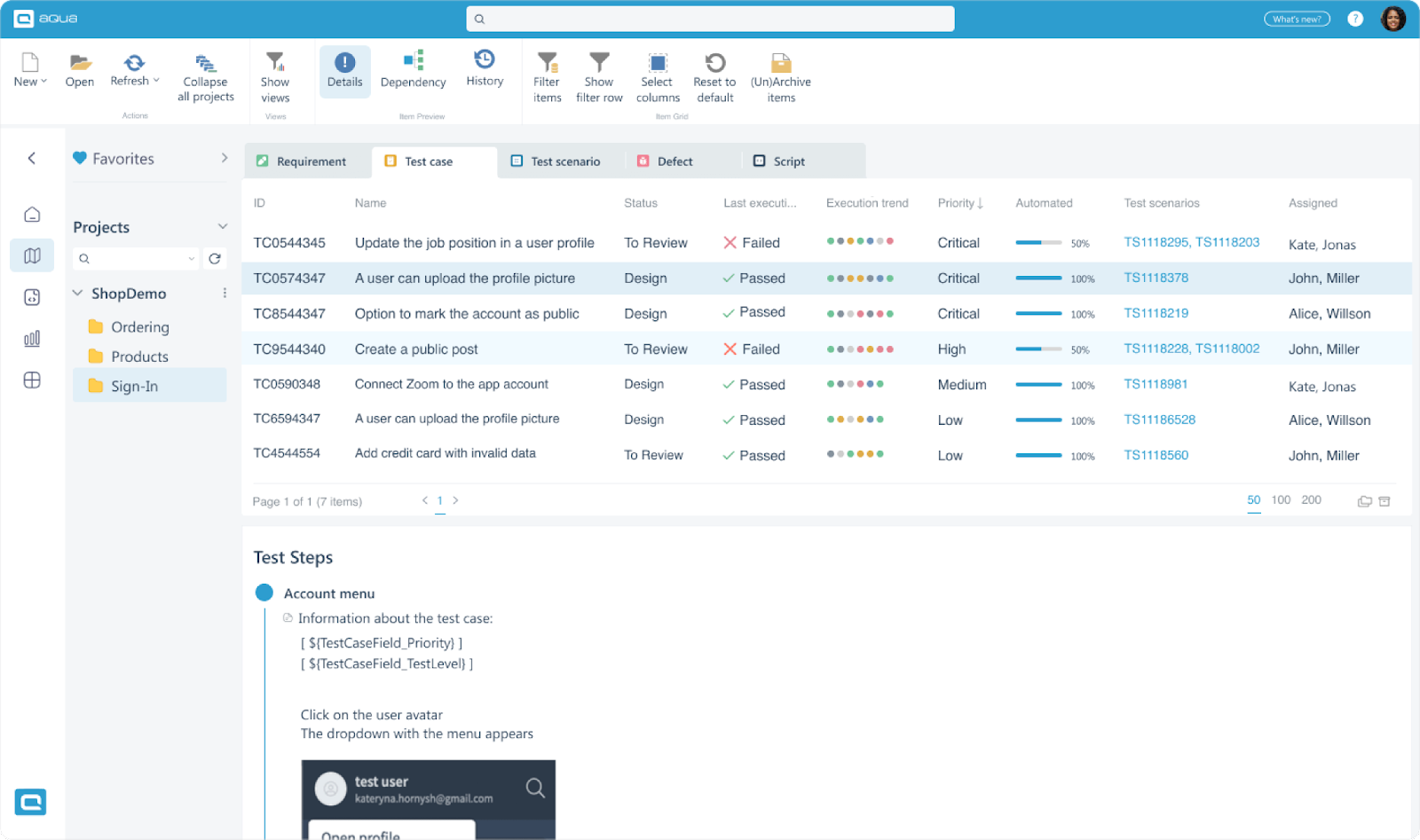Jira remains the most common tool for managing projects, especially in dev groups employing Agile frameworks – Kanban or Scrum. That is because, in its 21 years post-launch, this Atlassian-developed software has consistently tracked bugs and issues, stored users, tasks, and workflow data, and ensured seamless project organization.
“Does Jira have test case management?”
Unfortunately, there aren’t any specific testing features in Jira. However, this bug-squashing Godzilla can be customized to include testing functionalities by integrating with tools like aqua.
To further explore the possibility of using Jira as a test case management tool through aqua extension, here are the pros and cons.

Benefits
Here are some benefits of Jira as a testing platform;
It is economical
With Jira, dev groups can enjoy cost-effective organization and analysis software.
Compared with the cost of keeping staff that store, handle, and test their tasks with many platforms, Jira provides a more economical option without compromising on the quality of work achieved.
That’s because development teams can avoid the hassles of juggling different tools and seamlessly carry out all of a task’s essential functions internally.
It’s a workflow-powered platform
Combining test features allows a group to enjoy all stages of their work in a universal space.
So, in addition to the seamless usage of Jira as team management software, the platform provides a personalized structure allowing the staff access to requirements, stories, test cases, etc.
Plus, the adaptable flow of work enables easy monitoring of results and promotes teamwork among the team managers, analysts, and devs.
You get adequate tracking
With every step involved in building and testing cycles, Jira ensures it is more straightforward to monitor parts of the task, including prerequisites, issues, flaws, etc.
Besides the accessible repository feature Jira offers team members, it also ensures comprehensive traceability compared to regular requirements-test mapping, especially with Jira-integrated tools like Confluence.
It’s a familiar environment
Most Fortune 500 companies employ Jira primarily because of its transparent, user-centric display, ensuring the application’s visitor’s journeys are intuitive and easily adaptable.
So for Jira for project management groups, it’s ideal for adaptation. With this, you can skip the organization of training and save time and money.
It encourages the incorporation of procedures
Since demands, test cases, and issues in a task are usually connected in Jira, integrating these actions with reporting flaws and receiving feedback will also be seamless.
This will offer clarity and continuity in implementing test plans, managing code storage, and ensuring quicker general operation of tasks.
Disadvantages
Unfortunately, there are also drawbacks to deploying Jira as a testing platform, including;
Hassles with setting up
The setup time for this test tool, from understanding to formatting and trying, is usually time-consuming.
Plus, if the first trial doesn’t work or reveals that it is not the best fit for your company, it may take considerable effort to reorganize the procedure, especially if there are several tests.
The delayed flow of work
Inputting tests and related data may require access to multiple screens. This can be attributed to the fact that Jira was designed to receive issue data instead of test case data.
So, it may take some extra time to input the test and result information.
The extra time and effort will affect the flow of work, especially as the Jira test management tool often needs longer stages than a regular dedicated test management tool.
Limitations with creating reports
Preparing the report for concluded tests is usually tedious with Jira.
While a dedicated test management tool has dashboards that display comprehensive stats, Jira only works with alternatives like a spreadsheet to view metrics about passed and failed test cases.
Limited chances of scaling
Like most tools, Jira will function well with limited tests. However, it may be less efficient when the test cases are in the tens or hundreds of thousands.
Lack of the ability to implement tests
During test implementation in Jira, one can’t begin an automatic analysis on the platform. So, you will have to go manual.
And if automation and CI testing are components of your testing requirement, that could pose a challenge.
Final thoughts
Every test tool brings its distinctive ability, advantages, and cons to the table. So, choose a test tool that best fits your team.
In any case, with over 20 years of expertise, aqua delivers the perfect Jira test management software (https://aqua-cloud.io/jira-testing-tool/) solution that suits your staff.
















